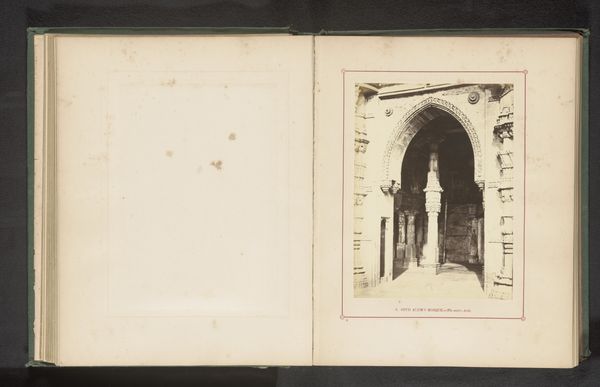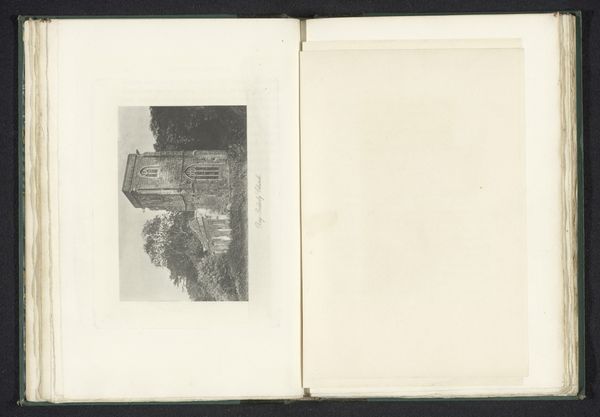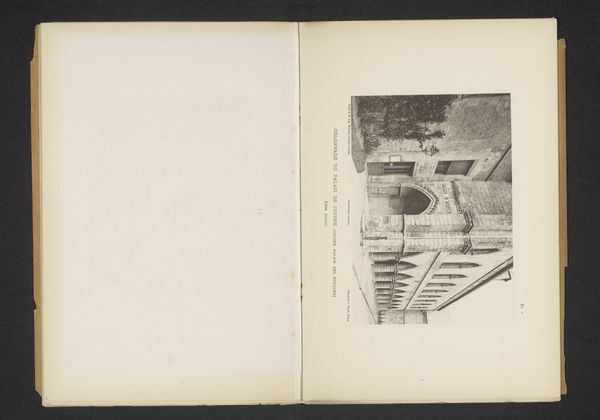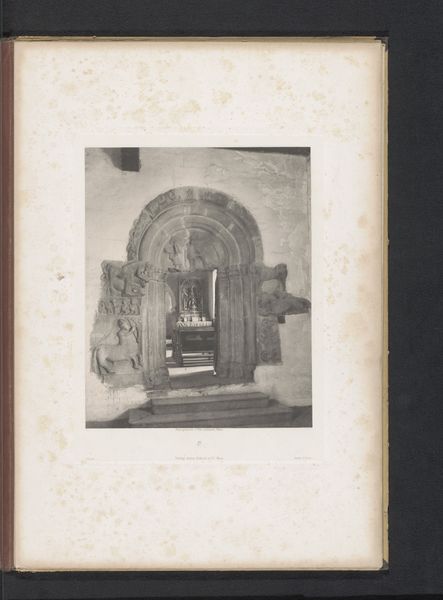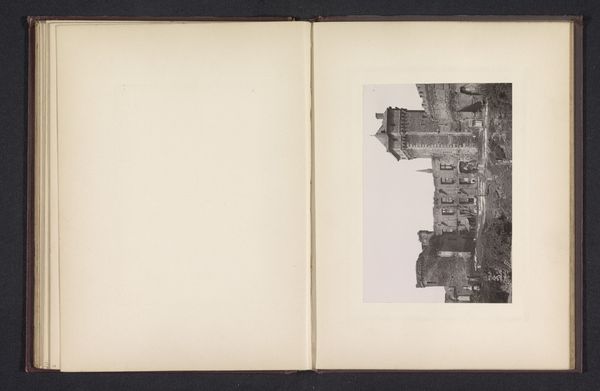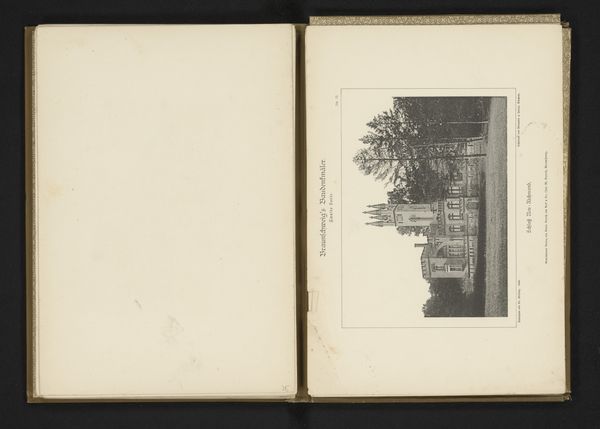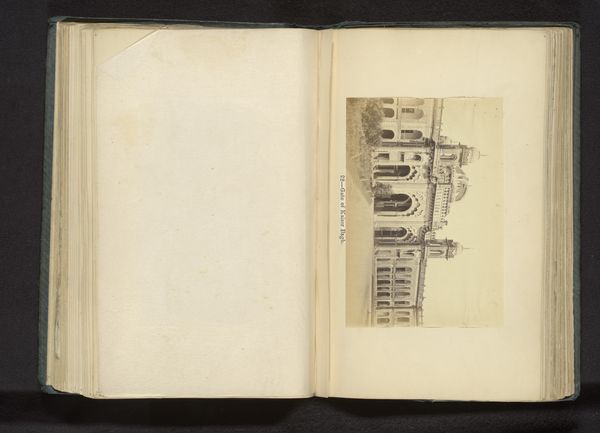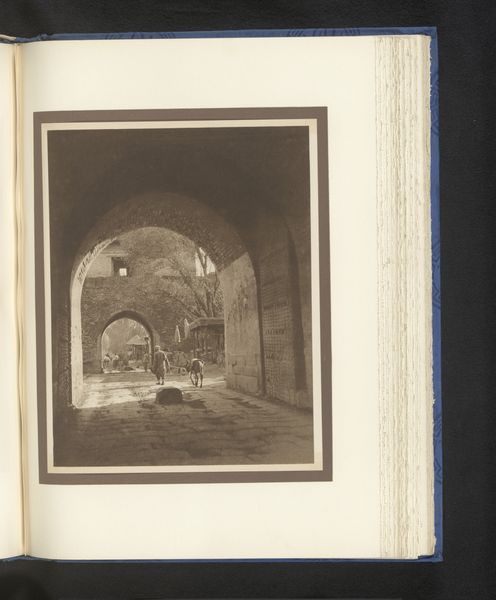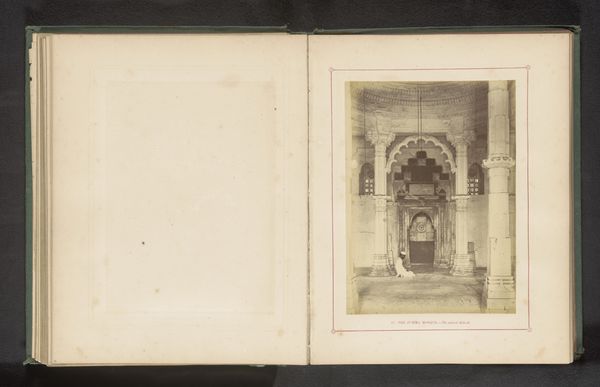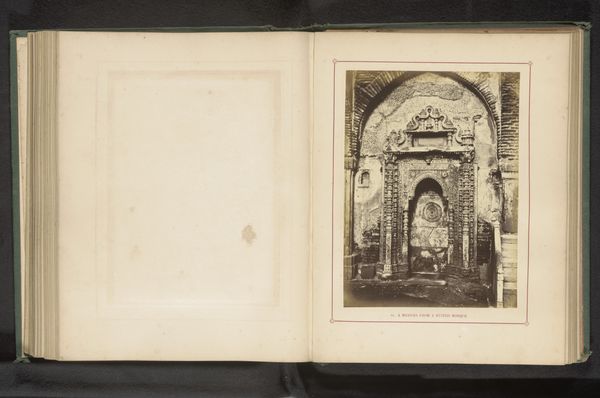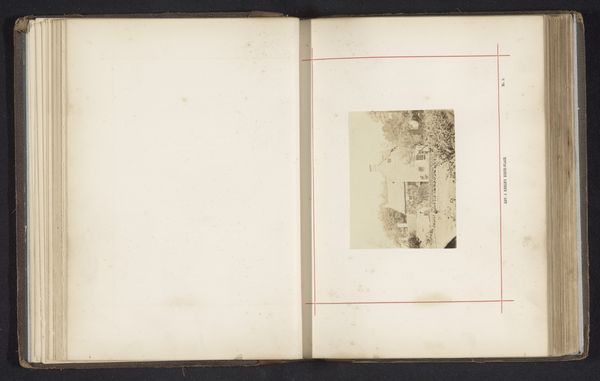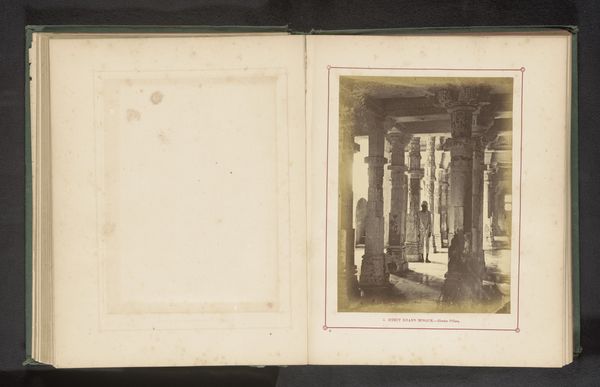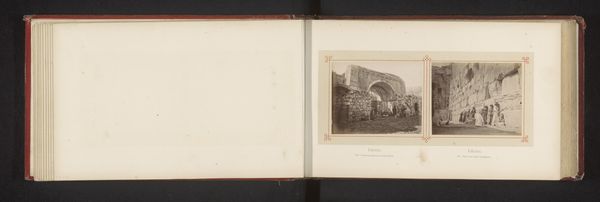
Fotoreproductie van het schilderij 'Jerusalem, street view' door Conway Shipley before 1865
0:00
0:00
photography, albumen-print
#
landscape
#
photography
#
ancient-mediterranean
#
cityscape
#
street
#
albumen-print
Dimensions: height 165 mm, width 125 mm
Copyright: Rijks Museum: Open Domain
Curator: This is a photographic reproduction of Conway Shipley's painting 'Jerusalem, street view,' dating back to before 1865, crafted as an albumen print. Editor: The scene is striking; the sepia tones lend it a dreamlike quality, evoking a sense of antiquity and timelessness. The play of light and shadow through the archways hints at untold stories within those ancient walls. Curator: Shipley’s work provides a valuable historical document. This street, with its architecture, whispers of layered histories—Ottoman, Roman, Crusader. We see here not just stone but a record of shifting powers and cultural influences etched into the very fabric of the city. Editor: I'm drawn to the archways, how they function almost as portals—framing distant figures, inviting us deeper into the labyrinthine streets. Arches as symbols have represented transitions and passage. They evoke journeys and perhaps, in a religious context, spiritual transformation. Curator: Indeed, and considering the history of Jerusalem, a city of pilgrimage, the arches may allude to that very idea. Also interesting to consider is that during the mid-19th century, increased Western interest in the ‘Orient’ shaped the creation and circulation of images like these. There’s always a politics to representation, especially concerning place. Editor: The way the light dapples on the rough stone reminds me of Byzantine mosaics. Even the muted color palette contributes, albeit unintentionally. It reinforces the sense of connection to a distant, hallowed past. The print echoes a persistent human need to find grounding in history. Curator: Absolutely. These images, reproduced and circulated, influenced perceptions and perhaps, solidified certain power dynamics. Photography, even then, wasn’t neutral; it could perpetuate romanticized notions, overshadowing contemporary social realities of the people living there at the time. Editor: Ultimately, this image encourages introspection. It nudges us to consider the enduring allure of Jerusalem as both a physical space and a symbolic center, imbued with layers of significance. Curator: Yes. And to also question how these romanticised visual records have potentially erased the everyday realities and narratives of its diverse communities over time.
Comments
No comments
Be the first to comment and join the conversation on the ultimate creative platform.
